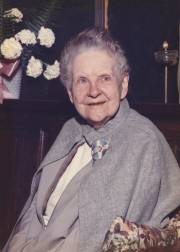Publications
|
Mrs. Park was a mystic with a gift for narrative, keeping a careful record of her visions and inner experiences throughout her life. In her later years, she undertook to record both her story and her most central visionary experiences. Her core mystical writings, which may be downloaded below, include:
Much of her work remains unpublished in the form of notes, diaries, Bible studies, booklets, and poetry. These are in the process of being archived at the University of British Columbia, Rare Books & Special Collections. Printed copies of Man,The Temple of God and An Open Door are available free of charge while supplies last, but a contribution to shipping costs would be appreciated depending on the destination. Please contact us to order. |
Between Time & Eternity
Man, The Temple of God
An Open Door

Click on image to download An Open Door
|
Olga Park self-published An Open Door in 1974 when she was living in a cottage in Port Moody, British Columbia. It is compiled from records she kept meticulously from the years 1914 to 1972 and represents the most significant of her manifestations. This compilation provides a detailed account of her central visions and is certainly the most mystical of her writings. Though there is some overlap between a few sections of this book and Between Time and Eternity, the overlapping portions appear in a slightly different context.
The visions include her astonishing visit to the “Church of the Future,” and various visitations by the Master Jesus. Here she explains the role of the figures of the Teacher, Rector, and Christ-servers in her mission, as well as how she was given a communion service and authorized to teach it to others. The book concludes with her moving “A Lamentation,” a poem in which the Christ speaks from the cross to the current age. In the Foreward to the book she states her purpose: To each his particular job. Mine is to instruct in contemplative devotion all such as desire to hear the voice of Jesus speaking through their own within as did the Founders of the Christian faith, and to know of a surety that His plan for the rescue of man from his self-destructiveness still goes forward. |
Book of Admonitions & Poetry

Click on image to download Book of Admonitions
and Poetry |
The Book of Admonitions and Poetry, written in 1969, is a shorter compilation than An Open Door. The “admonitions,” short teachings given in the “Silent Voice,” extend from February 1941 to April 1962. The second section consists of “Five Songs of Blessing,” “Eleven Songs of Encouragement,” and “Four Songs of Exhortation.” Most are short poems written in a biblical style using biblical parallelism and prayer-like repetition.
|









